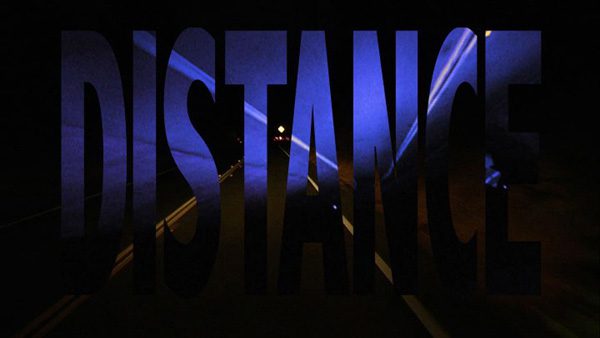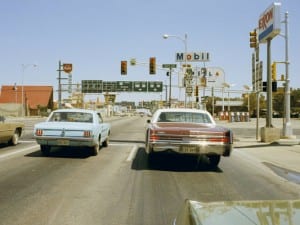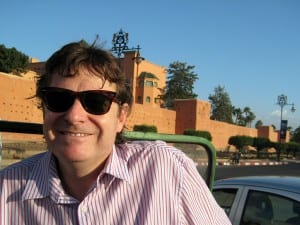Asymmetrical Cinema is a fitting title for the unsettling cacophony of noise and image currently on show at Beaconsfield. Curated by Dale Holmes and Kirsten Cooke under the moniker Material Conjectures, this is a highly visceral exhibition that probes the physical and psychological impact of mass media, film and television.
Housed in the gallery’s dimly lit Arch Space, Asymmetrical Cinema brings together two seemingly incongruous films to create a kind of cultural purgatory. Stuck between dystopic images of Los Angeles (Sanity Assassin, 2012) and the violent streets of Belfast seen in Alan Clarke’s Elephant (1989), the exhibition’s first “act” induces feelings of claustrophobia—an impressive feat considering the expansive dimensions of this post-industrial gallery space.
In contrast to conventional cinema, Asymmetrical Cinema encourages a more bodily form of spectatorship. Here, films are screened onto unique sculptural objects, whilst a lack of seating suggests that this is not a place for relaxation.
More often than not, films are screened simultaneously. As such, the exhibition highlights one of the key differences between the cinema and the gallery space: whilst cinema encourages viewers to watch films from beginning to end, it is often difficult (or impossible) to experience the entirety of a film in a gallery.
With this idea in mind, it seems salient to suggest that Asymmetrical Cinema works in two highly contradictory ways. At once, it seems to challenge and accentuate what it means to be a spectator. By screening two films concomitantly, contemplation becomes impossible. As such, the exhibition becomes more about the act of viewing than the content of the films themselves.
During Act 1, viewers are first confronted with the cold corridors and unexplained violence of Elephant. However, the drone-like noise of Amanda Beech’s Sanity Assassin elicits a strangely magnetic pull. Tucked behind a huge wall of black, it pulsates with abstract sound, somehow dragging the viewer away from shocking assassination scenes in Troubles-era Belfast.
Recalling moments from American horror movies, Beech’s film blends shots of bleak suburban houses with high-speed images of empty motorway. Charged with an unfulfilled sense of suspense, it is a journey with no destination—a dizzying kaleidoscope of image, text and noise.
Contrasting starkly with Sanity Assassin, Elephant conflates a minimal aesthetic with a frightening sense of anonymity—over 39 minutes, we witness 18 sectarian shootings and a mere three lines of dialogue. Much like Steve McQueen’s Hunger (2012), this is a film that commands our full attention. As one reviewer puts it: “Elephant is not a film of separate sequences but the absolute sum of its parts—it has to be seen as a complete work, in one uninterrupted sitting”.
Ultimately then, by screening Elephant alongside a work like Sanity Assassin, the curators sacrifice content for conceptual impact. Thus, it is only when one exits the gallery that the connotations of the show become clear. In today’s hyper-mediated world – where images of murder and injustice are naturalised – the escapism of cinema is often alluring. By contrast, Asymmetrical Cinema draws attention to the peculiar practice of spectatorship and the ways that culture can immobilise, as well as stimulate, thought and action.
Asymmetrical Cinema with Amanda Beech and Alan Clarke, until 8 June, Beaconsfield, 22 Newport St, Vauxhall, London SE11 6AY.
Following the gallery’s discursive “Interval” event, the show’s second “act” comprises two new projections by Material Conjectures, Solar Elephant (2013) and Black Plastic (2013). Made in response to the films in Act 1, they complement Sanity Assassin and Elephant, which will continue to be screened in the gallery’s Lower Space.
Emma Cummins
Credits
1. Amanda Beech, Sanity Assassin (2010), photography by Stuart Bunce, image courtesy the artist.





